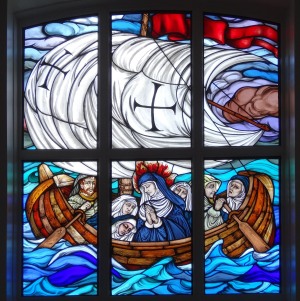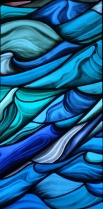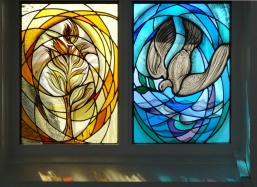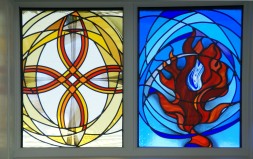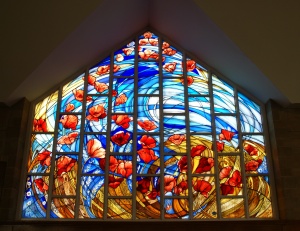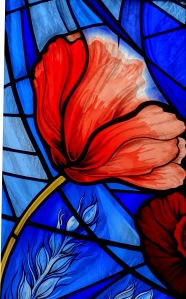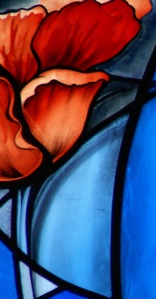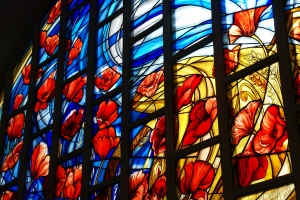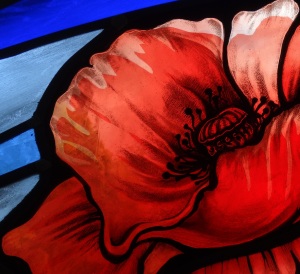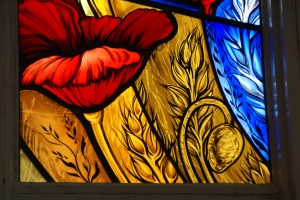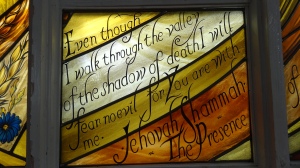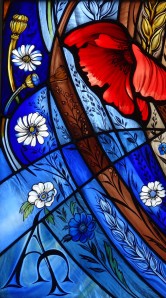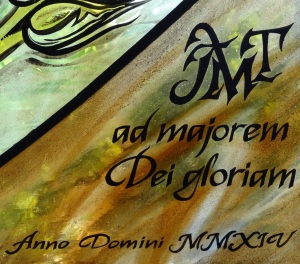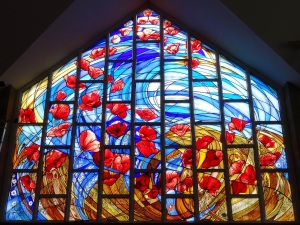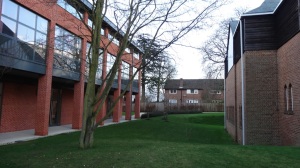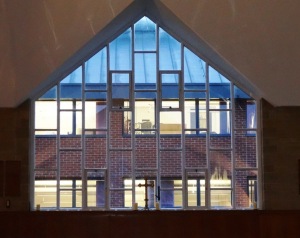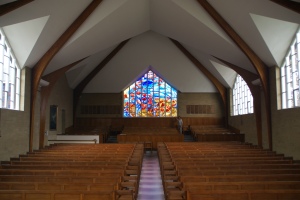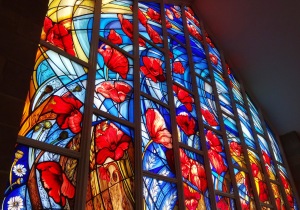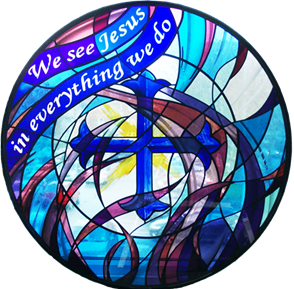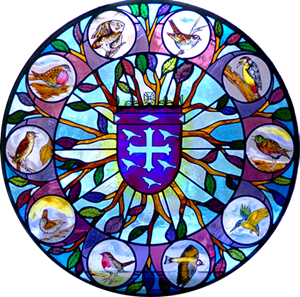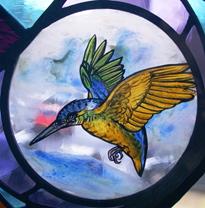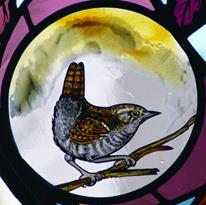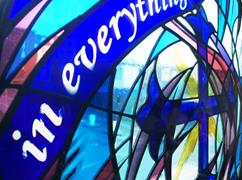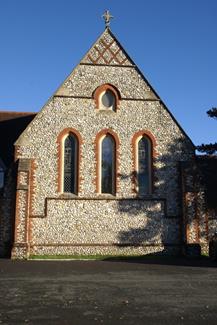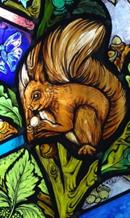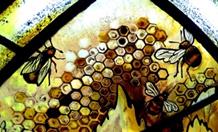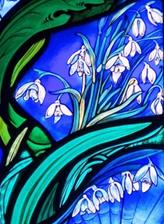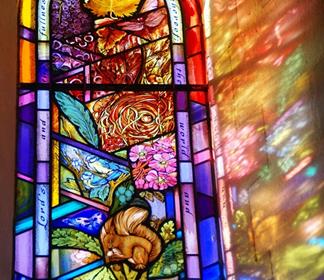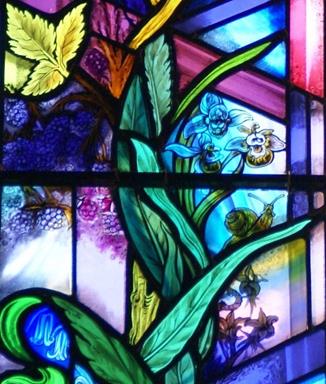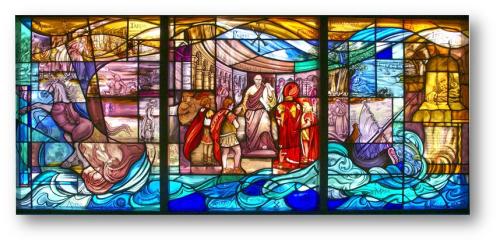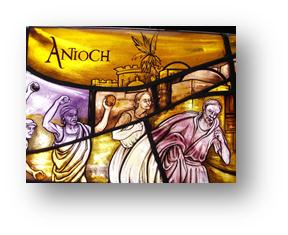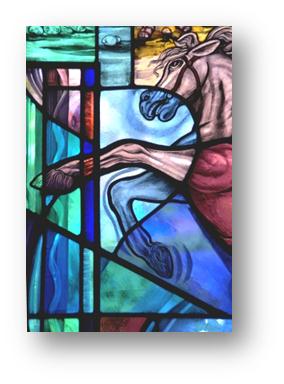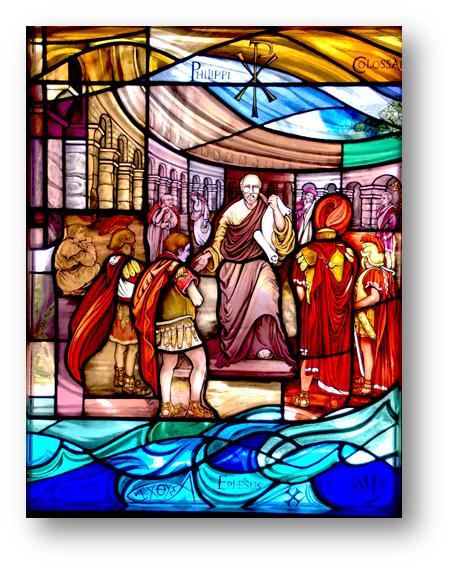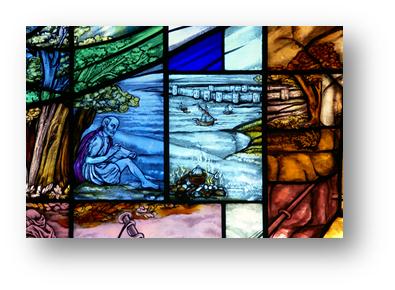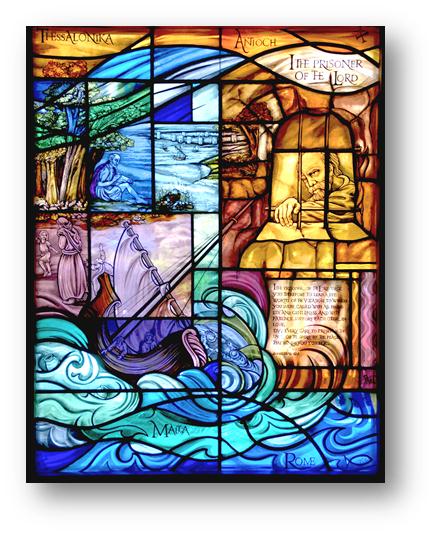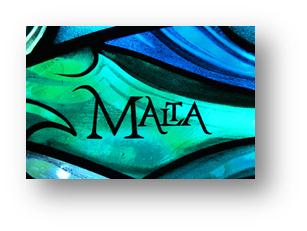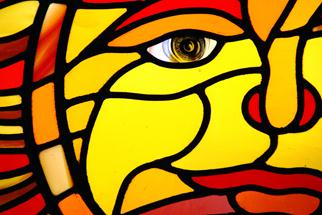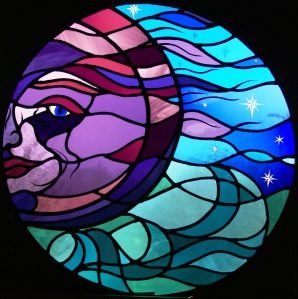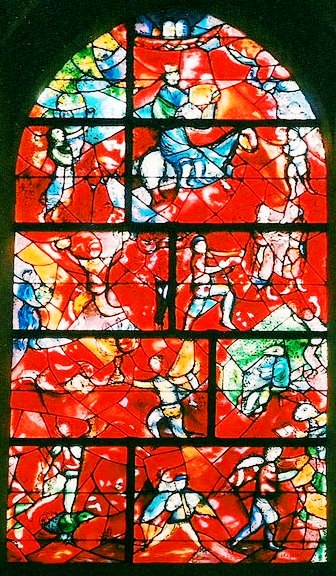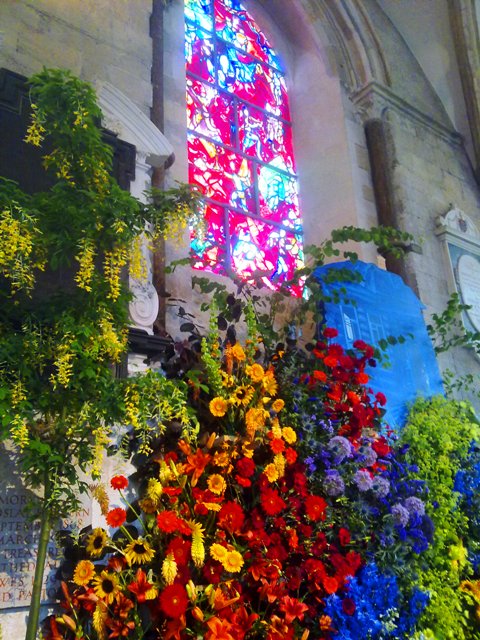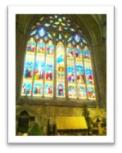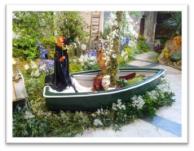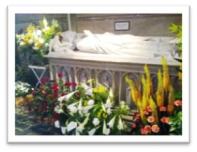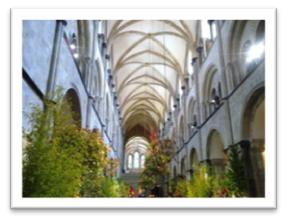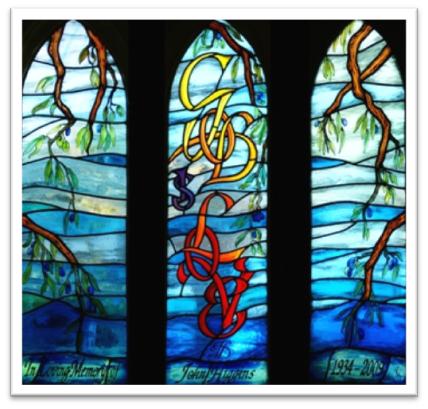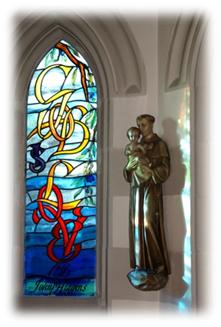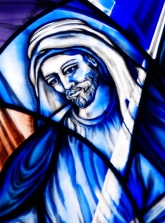The newly commissioned windows have been installed at St Walburga’s Catholic Primary School, Malvern Road, Moordown, Bournemouth, Dorset – March 2015
The stained glass artists at Sunrise Stained Glass studio have created 14 panels to the school hall depicting St Walburga on her voyage and quelling the storm with her prayers.
When Saint Walburga was 37, she left her sheltered life to make a long, risky journey and live among strangers. Walburga was a daughter of privilege. She was born to Saint Richard, an under-king of the West Saxons, and Winna, a sister of Saint Boniface, and had at least five siblings. When she was 11, her father entrusted her to the double monastery of Wimborne while he and two sons went on a pilgrimage. Richard died in Lucca, Italy, but the sons made it to Rome, where Saint Winibald became a monk. Saint Willibald would later take the cowl. Walburga remained at Wimborne, whose monks and nuns adhered closely to the Rule of Saint Benedict, and took her own vows. She likely expected to stay there the rest of her life. But in 748, her maternal uncle asked her and other nuns to leave their familiar, safe home for the sake of Christianity in today’s Germany. Walburga’s brother Willibald was already on the Continent, where he was the bishop of the recently created diocese of Eichstätt. We don’t know whether that played a role in her decision, but she accepted the mission. So did Saint Lioba, another relative of Boniface, and other disciples of Mother Tetta. If we are to believe legend, the sisters soon experienced the hazards of travel firsthand. During the crossing, the boat got caught in a storm. Walburga prayed and knelt on the deck, and the storm quieted.
The 4 No. high level corridor windows illustrate references which are particularly associated with St Walburga as follows:
Peace and calm after the storm, illustrated by the dove carrying an olive branch; an ear of corn; an interlocking cross recalling the Celtic cross of St Walburga’s time; Sacred ‘Oil’ and representing the Holy Spirit and healing.
In single glazed, traditionally leaded stained glass, using coloured full antique glass and incorporating kiln-fired metallic oxide pigments, etching, and silver stain.
